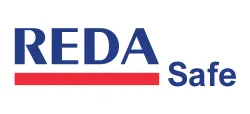10 Key Facts About Eye Protection

Introduction
Employers bear the responsibility for the health and safety of their workforce, which extends to preventing eye and face injuries on the job.
Outlined ahead are 10 pivotal points about eye protection. These facts are not just informational but are practical tools to help you avert eye and face injuries and create a safer working environment within your organization. Understanding and implementing this knowledge is key to maintaining workplace safety and employee well-being.
1. Eye Injuries Are Still Very Common in the Workplace
Daily, over 2,000 workers in the U.S. sustain eye injuries related to their jobs. This figure only accounts for those seeking medical attention, not including minor injuries treated with first aid.
About 10% of these individuals will need to take at least a day off to recuperate, while others might face job restrictions or need to switch roles temporarily during their recovery.
Unfortunately, a number of these workers may never completely regain their pre-injury condition.
2. Most Eye Injuries Result from Objects Striking or Scraping the Eye
The CDC reports that the majority of eye injuries occur due to small particles or objects striking or scraping the eye, often ejected from tools and machinery in use. Additionally, these particles can become airborne and enter the eye due to wind or other movements.
Some typical examples of such particles and objects are:
- Dust particles
- Chips from cement
- Shavings of metal
- Chips of wood
3. Safety Eyewear Must Meet the ANSI Z87 Guidelines
Workers should be equipped with eye protection that complies with ANSI Z-87 standards. You'll typically find the "Z87" mark on the frame's interior. If in doubt, confirm with the supplier.
The essential requirements for ANSI-certified eyewear include:
- Suitable level of protection for the job
- Safe and task-specific design
- Comfortable, secure fit
- High durability for the work setting
- Simple to clean and disinfect
- Clearly labeled with the maker's details
- Must be paired with adequate safety training
4. Detachable Side Shields Are Deemed Acceptable by OSHA
There's a common misconception that OSHA mandates the use of safety glasses with permanent side shields. In reality, OSHA's standard 1910.133(a)(2) states that detachable side shields are also permissible:
Employers must ensure that employees use eye protection with side shields when there's a risk from airborne objects. Detachable side protectors, such as clip-on or slide-on shields, that fulfill the relevant standards are allowed.
Nonetheless, it's crucial to note that individual employers and State Plans might impose regulations that exceed federal requirements. It's advisable to consult both to verify if detachable side shields are suitable for your specific workplace.
5. Eye Protection Is More Than Just Safety Glasses
The term "eye protection" often brings to mind safety glasses, but it encompasses much more.
According to OSHA's standards for eye and face protection, protective eyewear is mandatory in environments with risks such as:
- Airborne particles
- Molten metal
- Hazardous liquids
- Strong acids or alkaline solutions
- Chemical gases or fumes
- Radiation from light sources
Clearly, a variety of workplace dangers can cause eye injuries.
It's vital to step up our efforts in preventing eye injuries among workers. Beyond simply supplying goggles and safety glasses, it's important to partner with your workforce to evaluate potential hazards in each specific work area.
6. OSHA Has Specific Shade Requirements for Various Types of Radiant Energy Work
Welders and workers who face risks from radiant energy need to use the right eye and face gear. This includes equipment with filter lenses that offer sufficient protection against the intensity of the light.
OSHA sets forth basic requirements for protective eyewear in jobs involving radiant energy, with detailed charts and tables available for reference.
It's important to remember that employees may require multiple sets of protective hoods, goggles, and glasses to ensure their safety.
7. Burns and Penetrating Objects Are Also Sources of Eye Injuries
Chemical and heat-related burns frequently cause eye injuries at work. Workers across different sectors can be impacted by industrial chemicals or cleaning agents. Those who weld or work around welding activities are especially at risk for thermal burns.
Additional hazards include sharp items like nails, staples, or splinters that can puncture the eye. Such injuries often lead to irreversible loss of vision.
8. Contact Lenses May Present Additional Hazards to Employees
Generally, employees can safely wear contact lenses at work. Yet, certain conditions might pose extra risks for contact lens wearers.
For example, gases or vapors from welding could cause eye irritation and watering in individuals wearing contacts.
Contact lens wearers could also experience more intense effects from chemical splashes, and particles like dust could get trapped between the lens and the eye.
To manage these risks, it's advisable to offer extra training to employees who wear contacts. They should be informed about potential dangers and given alternative protective options. It's also important to emphasize that contact lenses do not replace the need for standard safety eyewear.
9. In Most Cases, Employers Are Not Required to Cover the Cost of Prescription Eyewear
Under federal OSHA regulations, there's no mandate for employers to provide prescription safety glasses for their employees.
Yet, some State Plans may have more stringent rules, so it's wise to check with your local OSHA branch for specifics. Additionally, individual companies and labor unions might have their own guidelines about funding prescription safety eyewear.
Employers are obligated to supply, at the very least, protective eyewear that can be worn over standard glasses. Many workers find such solutions bulky and uncomfortable.
Therefore, it's considered a good practice for employers to contribute towards the cost of prescription safety glasses. While not compulsory, it encourages workers to adhere to the safety protocols in the workplace more readily.
10. Emergency Eyewash Stations Must Meet Specific Design and Installation Requirements
In emergencies where eyes are at risk, workers might need to utilize an eyewash station to cleanse their eyes. OSHA mandates that these stations be easily accessible wherever there's a risk of exposure to harmful corrosive substances.
Eyewash stations are required to adhere to these basic standards:
- The flushing fluid should be either drinkable water, a preserved saline solution, or a preserved water source.
- They should provide at least 15 minutes of continuous flushing capability.
- The station should be designed to flush both eyes simultaneously.
- The force and temperature of the flushing fluid must be gentle enough not to cause additional harm to the eyes.
Conclusion
In wrapping up our discussion on eye protection, it's clear that safeguarding workers' vision is a multifaceted task that demands vigilant attention to detail and adherence to regulations. We've traversed through the common causes of workplace eye injuries, the intricacies of selecting the appropriate protective eyewear, and the importance of understanding and following both OSHA standards and additional state or company-specific policies.
From the daily risks of small particles to the specialized needs of welders facing radiant energy, the variety of hazards highlights the necessity of eye protection tailored to specific tasks. Employers should not only provide the correct equipment but also invest in training to ensure that workers are equipped to protect themselves effectively.
The importance of having accessible emergency eyewash stations and the nuanced understanding of when and how to use detachable side shields also play a crucial role in maintaining a safe working environment. Moreover, providing for the unique needs of contact lens wearers and considering the provision of prescription safety eyewear are practices that underscore a company's commitment to its employees' well-being.
Ultimately, the collective effort to prioritize eye safety can lead to a decrease in injuries and a culture of heightened safety awareness. By equipping and educating employees, we lay the foundation for a safer and more productive workplace where the vision of each worker is valued and protected.
